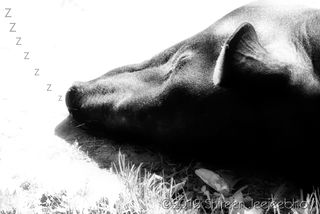Binaural Beats
Salvation: Brain on Training Wheels
Audiovisual entrainment is a decades-old technology that supports brains.
Posted July 20, 2018
This is part five of a weekly serialization of chapters from Salvation, a section of my book describing the hope that effective treatment brings. Part one is here. For the first time in over five and a half years and after standard rehab had made little change to my injury, I received a "yes" to my goal of healing my brain. Concussion Is Brain Injury: Treating the Neurons and Me begins at the start of my brain injury journey; the Salvation section begins the journey of restoring my neurons. This week, I start a new chapter and receive the gift of sleep.
Salvation
Chapter 9: Brain on Training Wheels

Monday, August 8, 2005. Another hot day. My skin burned from Toronto heat and my own heat. At last, I had figured out how to have a cold shower, to run the water until it splashed off my skin cool instead of scorching, without having to strip fully or get my long hair soaking. It was too tiring showering daily or twice daily, but my skin and mood demanded cooling down. Glenda said I had to arrange and keep the threesome ice cream date she had to beg out of. Trying to think how made me cranky. I remembered being able to plan so easily, even a wedding.
That long-ago day, I had had barely any time to finish icing the three-layered chocolate wedding cake I had settled on making for Glenda after poring over my collection of cookbooks before the guests arrived. The day before, Mistral had helped me grate from my ever-present five-kilogram bar of chocolate, the large amount needed for each layer. His sinewy arms were still tired. I wanted the cake and our home to look perfect for Glenda and Ebenezer’s wedding reception. I wore my dark green dress, which set off the corsage of pink roses Glenda had ordered. Mistral wore his striped grey suit with his grey silk tie with black dots. I took a moment to admire him and grin. I directed Mistral and whoever else I could find to twist and affix pink and white ribbons to our living room ceiling, clocks, and chandelier and place the crystal jug filled with pink roses and white baby’s breath on the table.
Glenda arrived, radiating contentment and discreet perfume in her sea-green filmy long jacket over her shimmering grey gown, her new husband Ebenezer a happy backdrop in his dark suit and elegant tie she’d picked out for him. She bustled in to the kitchen to ensure all was in order. I shooed her back into the living room where the crowd of parents, in-laws, Imeda, Vashti, Arta, and more were gathering to congratulate them. I followed her shortly, placing the cake in front of the jug of roses, an icing sugar heart standing out against the chocolate. Glenda and Ebenezer sliced it together as we toasted them with champagne. None of us could stop smiling.
I couldn’t smile now.
Tick. Tick. Tick.
August 25 via FedEx the black box Lynda had told me to get arrived. Mind Alive, an Edmonton company that designs and manufactures devices to improve brain performance and treat mental health issues, called what it did “audiovisual entrainment” (AVE). My psychologist, the one I had recently decided to leave, had called it “neurofeedback.” The ADD Centre called what they did “neurofeedback.” It was all too confusing. The black box was AVE. The ADD Centre appointments I had yet to start I’d call “brain biofeedback.” Satisfied with my sorting out of same-word-different-meanings, I fished the manual out of the black carry bag the unit came in and stared at it hard through my usual mental cotton wool to spot anything familiar. SMR. I thought that Lynda had mentioned that. My psychologist too had said “SMR” a long time ago. I read and reread the description. “Sensory Motor Rhythm (SMR) with HRV,” whatever that was, “Use to achieve relaxed attention.” Attention. Yes, I needed to focus.
That sounded good.
I sat down.
I slipped the large shades called the Tru-Vu Omniscreen on and fought with the headphones not to slide off my hair. I pressed the on button.
Lights flashed into my eyes. Too bright! Pulses thrummed into my ears. Too loud! I fumbled with the brightness and volume levels. Ah. Better. For twenty-four minutes, I lay there, thinking how my psychologist had been using shades with red not white LEDs in them for quite some time now. Would it be OK to go back to white? I wasn’t sure. Did I make the right decision? The thought faded as sleep began to overtake me.
The lights and sound powered off.
I struggled out of the chair and stumbled to my bedroom. I fell across my bed and slept.
For one-and-a-half hours I slept the sleep of a person who hadn’t slept in five-and-a-half years.
- To be continued next week.
Copyright ©2017-2018 Shireen Anne Jeejeebhoy. May not be reprinted or reposted without permission.


